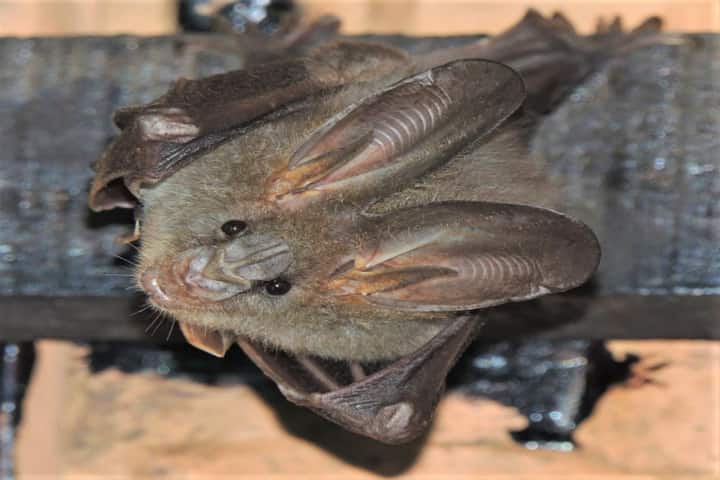A prey always runs the risk of getting hunted and eaten by the predator but is it possible for the hunters to prefer a particular gender for preying? Surprisingly this turned out to be true as found out by researchers at the Indian Institute of Science, Bengaluru.
The scientists led by Rohini Balakrishnan, Professor at the Centre for Ecological Sciences, IISc wanted to study as to how bush crickets or katydids were predated upon by lesser false vampire bats. For this tiny radio tags were attached to the insects to monitor their movement as per the IISc Press statement.
To their surprise, the team which included Harish Prakash, Kasturi Saha, both from CES and Prajna Paramita Mohapatra, found that it was the female insects who were at greater risk than males of being hunted. The reason for it was because they were frequent fliers and covered longer distances.
Why are female bushcrickets at greater risk of being hunted by the lesser false vampire bat than males?
Researchers @CES_IISc glued tiny radio tags onto the insects’ backs to find out.https://t.co/m6F6vp2WRj#IIScresearch pic.twitter.com/oZmOMpW2ge
— IISc Bangalore (@iiscbangalore) April 7, 2023
Details of this study were published in Behavioral Ecology and Sociobiology.
As per Prakash, study’s co-author, this research is the first insect radio tracking study in the country.
Native to South and South east Asia, the insectivorous lesser false vampire bats always take their prey to their roost to eat and it was there that it was found that a large part of their diet consists of bush cricket insects. Surprisingly more female wing remains were found at the roost than the male ones.
This puzzled the researchers. More so because the females were silent movers as compared to the males who cry out to attract the opposite sex.
Seized with the question as to what made female bush crickets more inviting, the scientists embarked on finding out the reason.
Wondering if it had anything to do with their size, as females were generally bigger than males and were perhaps more nutritious, they presented free-flying whistler insects of both sexes to bats in a large outdoor cage.
Interestingly, they bats made no discrimination when it came to hunting them.
Researchers then thought females were more exposed to risk of predation because of their frequent flying and that too for longer duration. To test this theory, tiny radio transmitters weighing 0.15 grams were glued onto the backs of male and female katydids and their movements were monitored.
Their pattern was studied for two seasons in 2020 and 2021 in Mala village located close to Kudremukh National Park in Chikkamagaluru district.
Females were found to move 1.5 times more frequently and 1.8 times farther than males. As per statement, “this led them (the researchers) to conclude that flying more frequently and traveling longer distances across trees may put females at a higher risk of being hunted by bats than males.”
Suggesting a possible reason, Saha, who is a Ph.D student at CES and corresponding author observed: “The females may move around in search of mates, as well as suitable egg-laying sites.”
The work of the scientists is not over yet as there remains several unanswered questions. Explaining this, Saha cited an example that the bats seem to hunt more female katydids during non-breeding seasons. “This is another mystery we are trying to solve,” commented Saha.




















